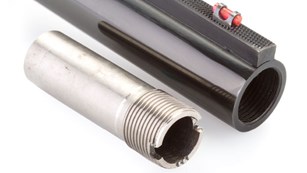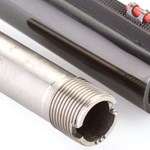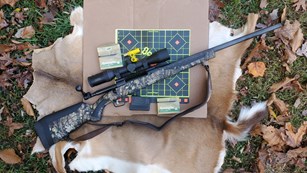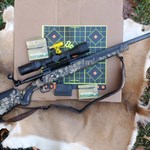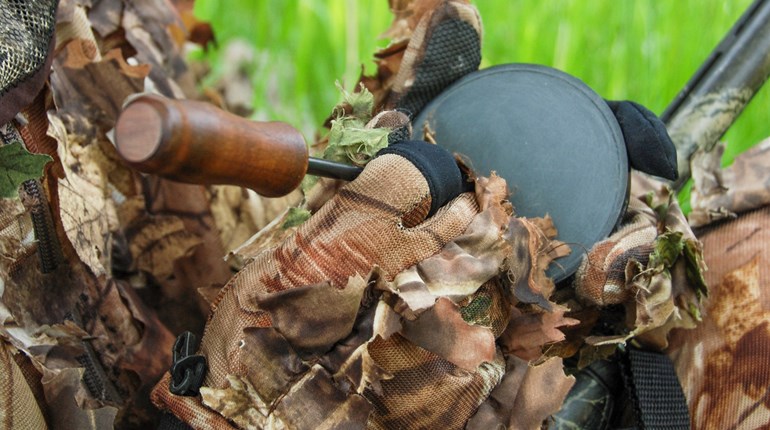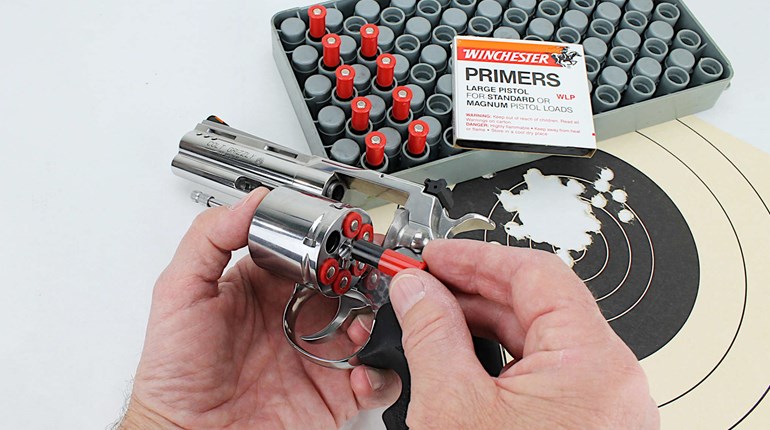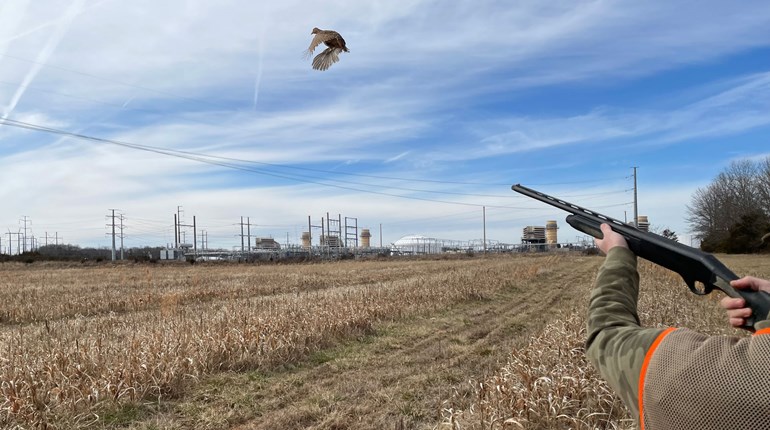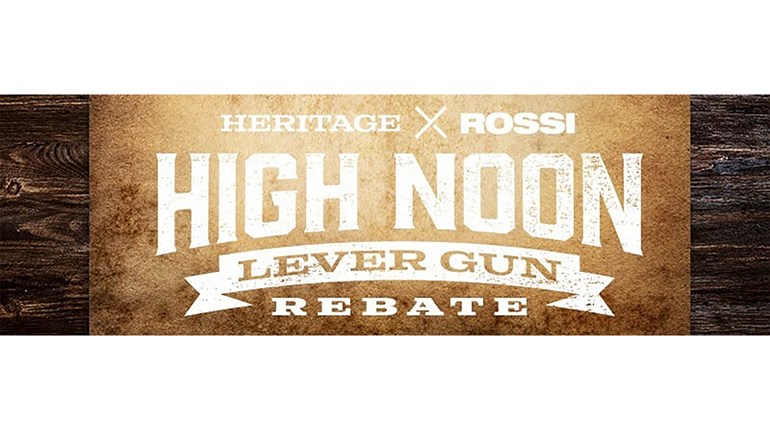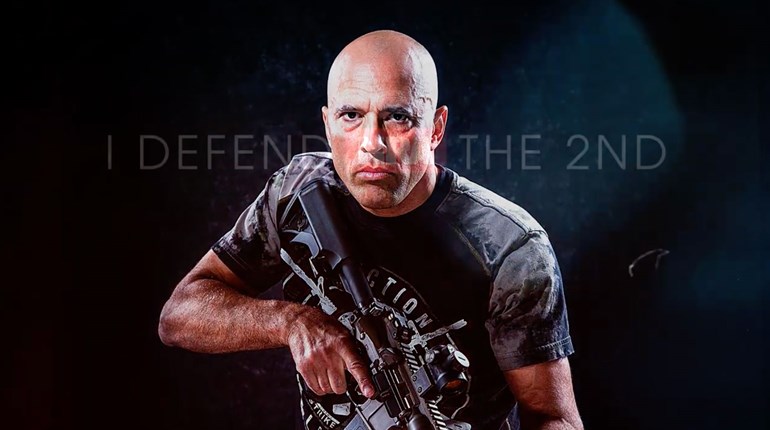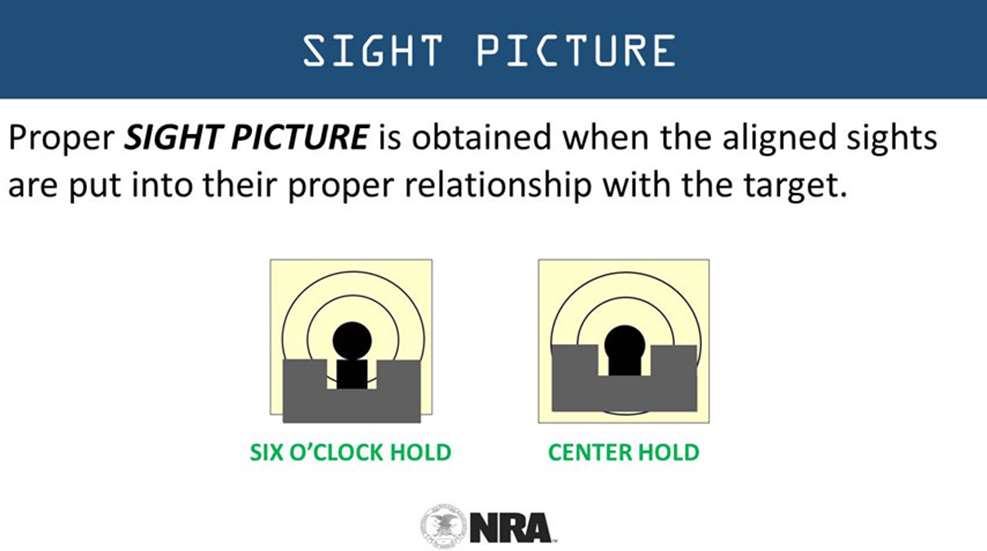
I took my nephew shooting several years ago. As he was aiming, I reminded him to focus on the front sight, and I said, “Gimme a 6 O’Clock hold.”
“Huh?” he swiveled his head around and looked at me funny, sights still on the target. He’d obviously forgotten, or more likely, I’d forgotten to explain.
“Just hold a little low,” I said.
“Low? Why would I do that?”
And so I called a ceasefire. Turns out, I believe many new shooters are confused on what is meant by a “6 O’Clock” hold, exactly, and why is it useful. So here goes.
Six O’Clock, of course, refers to a clock wherein the number 6 is always found below its center, or at the bottom of its face. A 6-O'clock hold, then, means a sight picture (front sight, rear sight and target) wherein the sights are aligned immediately below the bullseye. So when someone says “give me a 6 O'clock hold,” or “hold at 6 O’Clock,” they are simply asking you to aim slightly low. This is done for two reasons:
First, for some context, you may have heard of another saying in shooting: Aim small, miss small. This means that the smaller your point of aim—or the more focused you are on a specific point—the less likely you’ll be to miss the whole target. In other words, rather than aiming generally at a pie plate, you should aim at the very center of that pie plate. That way if you miss the center you’ll likely still hit the pie plate. But if you aim for the whole pie plate and you miss, you’ll miss everything.
So, considering that the sights of a handgun block a significant portion of the target from the shooter’s view when it is aimed, if the shooter merely aims “dead on” at the center of the target, at least the bottom half of the actual bullseye will be obstructed from view by the sights, maybe more. Therefore, aiming exactly at a target’s center—if you can’t see the entire target—is a guess. But if a 6 O'clock hold is used, the shooter can aim just under the desired point of impact with full view and clarity of the exact target, no matter how small it is.
Most expert target shooters, for example, believe it’s easier and more precise to aim at the exact point where the white of the target’s paper meets the black bottom edge of the bullseye, rather than aiming at the approximated center of that black bullseye. So most competitive shooters use a 6-O'clock hold, and adjust their guns’ sights so that the bullet’s point of impact (where it will strike) is slightly higher than the guns’ point-of-aim.
Keep in mind, however, that just because target shooters use the 6 O’Clock hold method doesn’t necessarily mean it’s the best for you. Your ideal hold might depend on the distance, the shooting style, the target...or it might even depend on your gun. Most Glock pistols, for example, do not have adjustable sights for elevation, and so their point-of-aim is regulated from the factory to coincide with the guns’ point of impact. Therefore, conventional shooters who use factory Glocks often align their sights so the front sight blade exactly bisects the center of the bullseye (called “center hold”) so the bullet will, in theory, strike in the middle of the bullseye. In other words, if you used a 6-O'clock hold while shooting a Glock with factory sights, your bullet would likely hit low. Many other handgun models behave in the same way, so over the years many conventional shooters have learned to use a center hold or hold “dead-on” when shooting.
Provided your firearm has adjustable sights, however, there are many merits to the 6-O'clock hold. Namely, you can see and identify more of the target even as the distance from it increases or the lighting conditions worsen. Just remember that the “aim small, miss small” concept still applies, so when using a 6 O’Clock hold don’t just hold under the whole target but rather under the tiny bullseye. Then, if your gun’s sights are properly adjusted to impact slightly high, you’ll hit it dead center.
So, the next time you hear 6-O'clock hold, know that it simply refers to a sight picture wherein the sights are held slightly lower than the exact spot that’s intended to hit. If you haven’t tried it, it’s high time you did.
